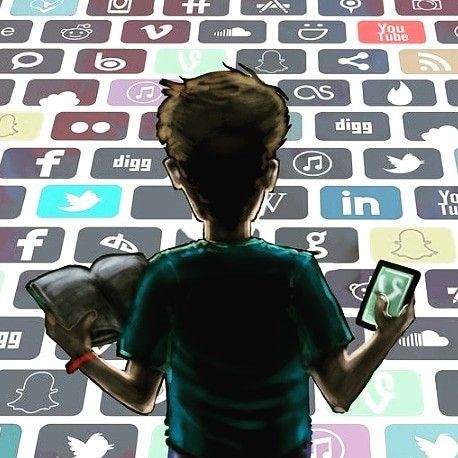
Image source: https://pin.it/1MsDV7yrp
Hey everyone!
This week, I’ll discuss the concept of digital identity, analyze the difference between personal and professional online images, and how we can manage our online presence effectively.
What is Digital Identity?
Digital identity is made up of everything from our personal information and identification (think profile picture and username) to our online activities, including the content we share (posts, videos, images, etc) and how we respond to others’ content. It’s like a track record of everything we do online.
If you’re curious, check out this video by Eric Stoller where he explores the concept and impact of digital identity more in-depth:
For better or for worse, our digital identity can also differ from our real-life identity. For instance, a person who is reserved in real life might be much more outspoken and active online, or vice versa. I find that it’s better to be more authentic, but there can also be a good reasoning behind such disparities. Keep this in mind when you navigate the online world!
My Personal Use of Social Media
I mainly use Instagram to share photos of my hangouts with friends as stories. These stories disappear after 24 hours and are visible only to my friends. Despite this, I follow the best practices to never post inappropriate content or share detailed personal information. I also avoid posting potentially controversial personal opinions publicly for two reasons: it’s not my style, and I want to avoid conflicts.
It’s worth noting that our digital identity can be a permanent record. While it might seem like we can delete images and posts, there’s no guarantee that all copies will completely disappear from the internet. It’s always better to be safe than sorry!
Check out this article to learn more about the problems with digital identity on the internet:
Personal vs Professional Digital Identity
I have a LinkedIn account dedicated to building a professional image suited for my career. Here, I often share key milestones such as participating in coding hackathons, starting and ending work terms, and updates on projects I’m involved in.
Having separate accounts is very beneficial. It allows me to tailor content to distinct audience groups: LinkedIn for work professionals and Instagram for friends and family. Crossover content might work well too. For instance, last summer during my co-op, I enjoyed many hangouts with my intern friends. On Instagram, I shared more about our fun activities, while on LinkedIn, I reflected on the positive workplace experiences.
The main drawback I see in maintaining separate professional and personal accounts is potentially missing out on a unified and broader audience base. Nonetheless, I think this instills a healthy boundary of work-life separation.
Evolving Social Media and Trends
Adapting to new platforms and trends while maintaining a consistent and positive digital presence will require careful planning and strategy. Firstly, I’ll conduct research to understand the target audience and content format of new platforms. I’ll observe how early adopters are using the new platform, too. Understanding these will help me gauge how to effectively use each platform.
Based on this observation, I’ll strategize my content to resonate with the audience. Whether it’s sharing positivity, personal experiences, or domain knowledge, I aim to engage with my audience in meaningful ways. This approach ensures that my digital presence remains impactful and relevant as social media continues to evolve!
Final Words
Shaping our digital identity is a matter of awareness and proactive protection. I hope you’ve found valuable insights in this post to help foster meaningful digital presence and achieve our digital goals effectively.
Additional Resources
- Digital Identity: Are you in control? | Eliot Wood | TEDxUniversityofEssex: https://youtu.be/puATJCM43Iw?si=sScwGbEmt096LOYy
- Should you want to take a step further and build a personal brand on social media, check out these great article:

2 Responses to “Blog #2 – Digital Identity 🪪”
Hey Julia!
Learning your perspective on digital identity and the relationship between personal and professional identities online was super interesting. Maintaining a distinct and professional approach online on platforms such as Instagram and LinkedIn shows an approach to maintaining professionalism and authenticity with the content being provided to its consumers. The strategy you mentioned about adapting to evolving social media through target content is interesting, ensuring that the content being posted is relevant. Balancing strategy with content creation and authenticity, you have shown that it is possible to achieve both personal and professional goals while keeping a solid digital identity that coincides with one another.
Hi Julia,
This is a great overview of the concept of digital identity. I think you explained it very clearly and even included links for further reading. Your examples of separating Instagram and LinkedIn is also relatable as I do same with Reddit and LinkedIn. I also really like your strategy for adapting to social media trends. Scouting early audience can help identity who the platform is designed for. My only concern is whether those people are the actual audience, or they are just checking a new potential “trend.”